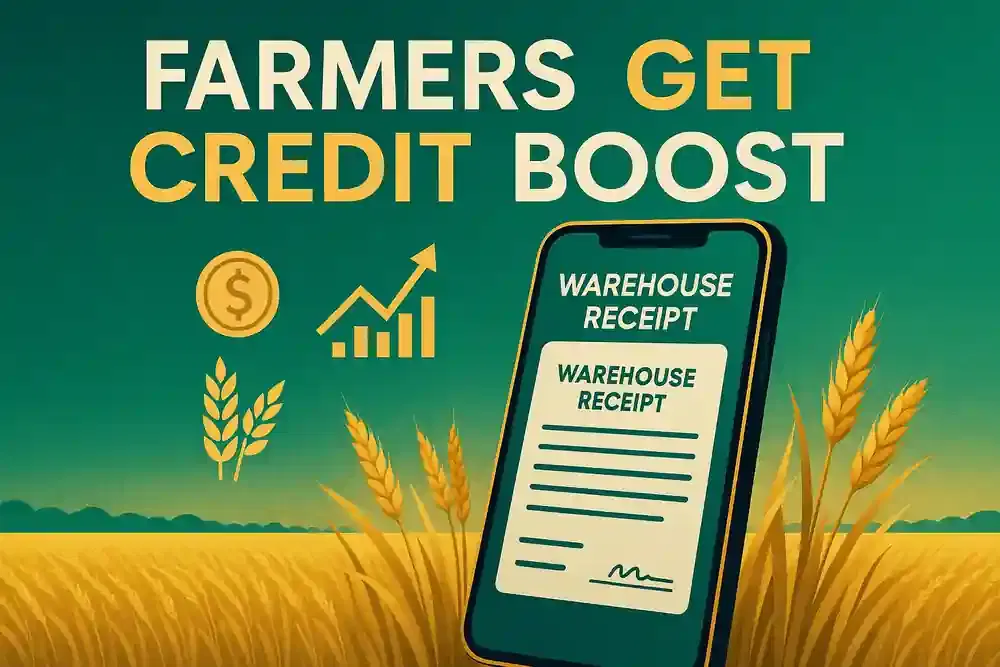Arya.ag and South Indian Bank Partner to Enhance Farmer Access to Credit Through Warehouse Financing
Banking/Finance
|
29th October 2025, 9:44 AM

▶
Stocks Mentioned :
Short Description :
Detailed Coverage :
Arya.ag, a leading homegrown integrated grain commerce platform, has announced a strategic partnership with South Indian Bank. This collaboration operates under a Business Correspondent model, designed to significantly improve access to formal credit for smallholder farmers, Farmer Producer Organisations (FPOs), and various agri enterprises. The core mechanism for this credit extension is warehouse receipt financing, where the stored commodity itself serves as collateral.
The partnership directly addresses India's persistent post-harvest credit gap, a critical issue that leaves a large portion of the agricultural community underserved. Industry estimates indicate that over 60% of India's smallholder farmers are excluded from formal lending channels, with post-harvest financing being particularly underdeveloped. While the credit demand in this segment is estimated to exceed Rs 1.4 lakh crore, traditional banking services cater to only a fraction, leaving many struggling for working capital.
Arya.ag's platform digitizes commodities stored in its network of over 11,000 warehouses across 425 districts. This digitization transforms each grain into a 'digital asset' that can be transparently stored, financed, or sold. By anchoring finance in the stored commodity, Arya.ag shifts risk from the borrower's creditworthiness to the commodity's quality and value, thus bypassing the need for traditional collateral or extensive paperwork.
South Indian Bank's extensive reach and institutional commitment will enable the deployment of this risk-mitigated credit solution to remote agricultural districts. The partnership aims to facilitate credit worth over Rs 250 crores. This initiative will allow farmers to secure their produce and access immediate financing, providing them the flexibility to sell at optimal market times rather than under distress.
Impact: This partnership is expected to have a significant positive impact on financial inclusion within India's agricultural sector. By enabling easier access to credit, it can empower farmers and agri-enterprises, potentially leading to increased profitability and reduced financial distress. It also strengthens the role of technology platforms in rural finance. The impact rating is 8/10, as it addresses a fundamental economic challenge for a large population segment.
Difficult Terms: Integrated grain commerce platform: A company that manages various aspects of grain trading, including storage, financing, and selling. Business Correspondent model: A model where a bank appoints an agent to deliver banking services to customers, especially in remote areas. Warehouse receipt financing: A type of loan where a receipt issued by a warehouse for goods stored in it is used as collateral. Smallholder farmers: Farmers who cultivate small plots of land. Farmer Producer Organisations (FPOs): Farmer-owned organizations that collectively engage in activities like procurement, processing, marketing, and selling agricultural produce. Post-harvest credit gap: The difference between the credit needed by farmers after harvest and the credit actually available to them. Formal lending channels: Official sources of credit such as banks and registered financial institutions. Collateral-backed loans: Loans that are secured by an asset that the borrower pledges as security. Agri ecosystem: The network of businesses, organizations, and individuals involved in agriculture. Digital asset: An asset that is created, stored, or exchanged on a digital platform. Non-performing assets (NPAs): Loans where the borrower has defaulted on repayments for a specified period. Co-lending: A process where two or more lenders come together to finance a loan, sharing the risk and return.